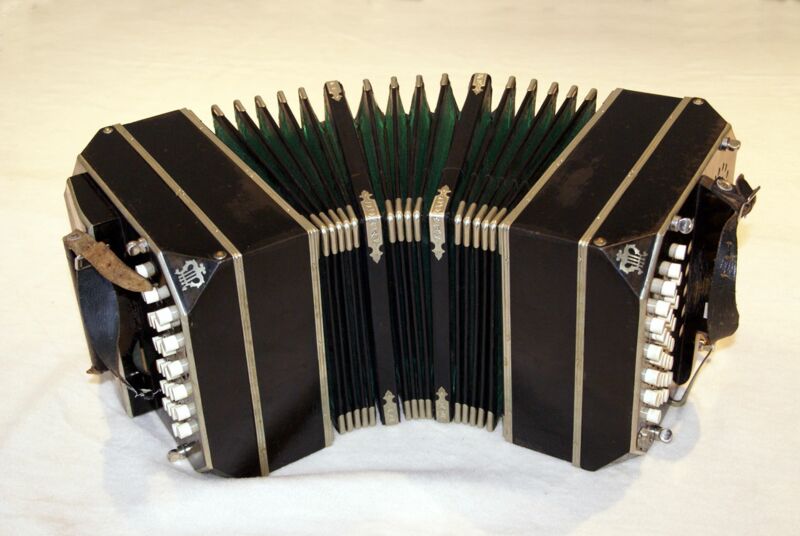Bandoneon
After the harmonica was invented in 1822 – 1824 by Christian Friedrich Buschmann, the Englishman Charles Wheatstone patented an instrument in 1829 that was a free-reed instrument and hexagonal in shape. It was called a “concertina”.
Carl Friedrich Uhlig developed it further between 1835 and 1840. The music teacher Heinrich Band from Krefeld, however, later re-arranged the keys in 1846 and called it a “bandoneon”.
In 1854 Carl Friedrich Zimmermann and his brothers began industrial production of these instruments. In 1864, however, they emigrated to America and handed over the business to the former factory foreman Ernst-Louis Arnold. Under the name “ELA” high-quality instruments were made and exported around the world. His successors then produced under the brand name “AA”, an abbreviation of Alfred Arnold. In 1924, Arnold made the German unified bandoneon and the “Rheinische Tonlage” for export to South America.

The bandoneon belongs to the family of free-reed instruments. The sound is created by free-moving metal plates, the reed tongues. They displace the air flowing through in precisely defined movements which then create the notes.
The metal plates are mounted at one end on a board so that the other end can move freely in the air. Directly under the reed tongue is the flow channel. This is the same size and shape as the reed tongue. The air passes along the flow channel and sets the reed tongue in motion. This in turn stimulates the surrounding air in the flow channel. The interplay of air, flow channel and moving tongue creates the note. Depending on the size of the tongue and the board opening, a higher of lower note is created.